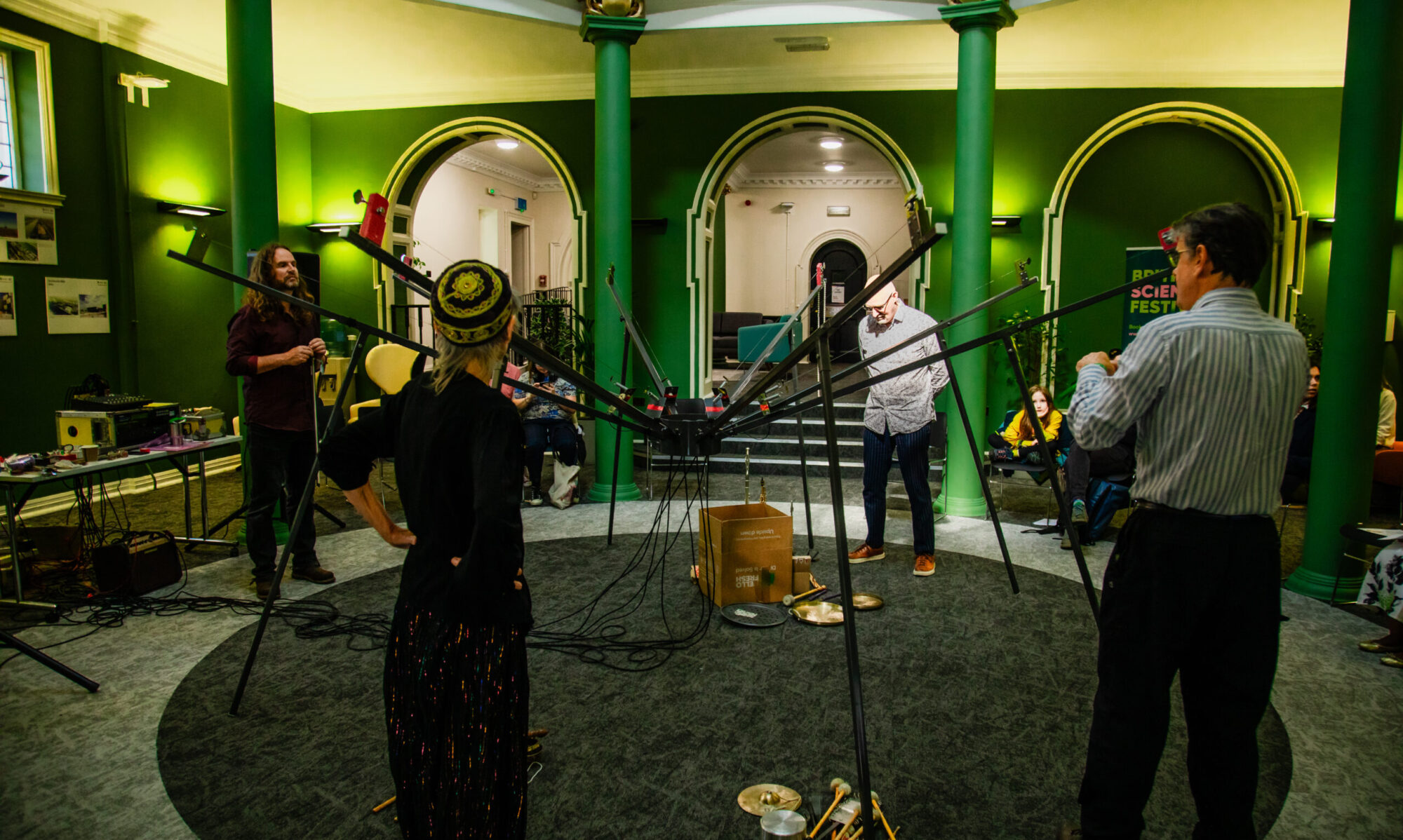Welcome to the world of The Sonic Spider – the world’s first eight-legged musical instrument, built to help you journey into the mind of an orb web spider, silently waiting at the centre of her web.
Surprisingly, the female spiders that build these webs are almost blind. They know the world around them only through the vibrations that reach them through the silk lines of their web. It is this world of vibration that the Sonic Spider recreates with sound, the closest we can come to entering the spider’s sensory experience.
At performances, we ask the audience to imagine the whole event space is filled by a giant web, with the Sonic Spider sitting in its centre. Several musicians play the eight strings on the Spider, while others, playing a variety of instruments, perform out in the “web”. A fly may crash into the web, sending the spider into a frenzy of activity as it tries to capture it and wrap it in silk. Or a male may appear, cautiously signalling that it is not a fly, and hoping to mate and flee, without being eaten. Dangerous predators may appear, and the wind will set the web vibrating too.
Musicians and audiences become immersed in the spider’s world of vibration, through sound – but that is just the beginning of the story the Sonic Spider team want to tell.
The goal is to encourage the audience to perceive how the world (or “umwelt”) of every creature is unique, and to let their imaginations go and begin to imagine the multitude of worlds in this space right here, right now, of creatures large and small around them, that often pass through our lives unnoticed, or even despised as pests.

The bigger ideas behind the Sonic Spider, and what the future might hold for us, are narrated in a series of images and text, either as exhibition posters set out around the walls of the performance space, or on big screens, and/or in a printed free 24-page booklet given out to audience to take home.
Musicians can help people enter the world of other creatures but every performance is informed by what science has told us about the spider’s senses, and what excites it in a day in its life. We envisage a new world, where our appreciation of other creatures’ lives is enormously deepened by science and conveyed through the arts. We are not alone – we are part of a growing movement for change. For example, scientists have now proven that many animals besides humans dream. Previously, our understanding of our own and other creature’s consciousness was so limited that it was assumed only humans could dream. And it is only comparatively recently that it has been generally acknowledged that other animals feel pain, since feeling pain is also an attribute of consciousness. This has led at times to extreme cruelty such as torturing rats to see if it caused them to have nightmares (it did). Previously, our understanding of our own and other creature’s consciousness was so limited that it was assumed only humans could dream.
We may never know if orb web spiders dream, or indeed what that might mean, but judicious use of new scientific techniques and artificial intelligence, combined with human imagination and empathy, can help us start to unravel the subtleties of what animals respond to and what they’re communicating to one another.
Our vision is of a future where we might treat not just other animals more kindly, but one another as well.
The Sonic Spider is the brainchild of Camilla Saunders composer and co-ordinator, whose work attempts to build bridges between species on this planet through the medium of sound; biologist and science writer Dr. Alun Anderson, and musician and maker Charlie Beresford who designed and built the Spider.
The Sonic Spider information pdf – Download
